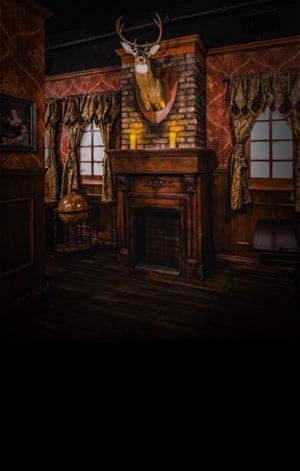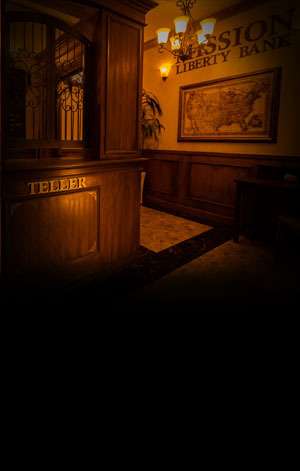Can non-English speakers enjoy an escape room Anaheim CA?
Can non-English speakers enjoy an escape room Anaheim CA?
Escape rooms have skyrocketed in popularity thanks to their immersive storytelling, clever puzzles, and the thrill of racing against the clock. Yet for non-English speakers, the prospect of decoding clues in a language they don’t fully understand can feel daunting. Fortunately, many modern escape room venues go above and beyond to ensure that language barriers don’t get in the way of the fun. For non-English speakers curious about testing their wits in Anaheim, visiting an escape room anaheim ca offers a universally engaging experience that relies more on observation, logic, and teamwork than on vocabulary mastery.
The Universal Language of Puzzles
Puzzles in escape rooms often transcend words. Many challenges rely on shapes, colors, patterns, and tactile interactions that non-English speakers can tackle just as effectively as native speakers. For example:
-
Visual codes and symbols: From hieroglyphics to QR codes, many clues use imagery that doesn’t require reading complex instructions.
-
Mechanical puzzles: Physical locks, hidden compartments, and jigsaw-style mechanisms speak for themselves—and clues may hint at how to move or align objects without lengthy text.
-
Environmental storytelling: Set design, props, and ambient sounds convey narrative context. A broken clock, a dusty volume on a shelf, or a flickering lamp can all guide players toward solutions.
By emphasizing universal problem-solving skills, escape rooms ensure that success hinges on perception and collaboration rather than on fluency.
Multilingual Support and Clue Formats
To better serve diverse audiences, escape rooms in Anaheim implement features that bridge language gaps:
-
Bilingual clue cards
Many venues provide clue sheets in multiple languages. Before the game starts, participants can choose the language they’re most comfortable with. -
Iconography and infographics
Pictograms and diagrams illustrate tasks—whether it’s rotating a dial to match an icon or fitting shapes into a corresponding outline. -
Digital hints and subtitles
Some rooms equip players with tablets or screens that display hints in various languages at the push of a button. -
Interactive QR codes
Scanning a QR code with a smartphone can bring up translated instructions or even short tutorial videos. -
Pre-game orientation
Game masters often offer a quick overview in whatever language the group prefers, including pointing out major puzzle locations and clarifying safety rules.
These accommodations let non-English speakers focus on the thrill of discovery rather than wrestling with unfamiliar vocabulary.
Teamwork and Non-Verbal Communication
Escape rooms naturally foster collaboration—an advantage for groups with mixed language abilities. Non-verbal cues and intuitive cooperation can make a world of difference:
-
Gestures and pointing
A teammate can signal “look here” or “turn that” without uttering a single word. -
Demonstrations
Physically showing how to slide a panel or use an object can expedite understanding faster than translation. -
Role assignment
Teams often divvy up tasks: one person puzzles out numerical codes, another tackles shape-matching, while a third takes notes or flags new clues. -
Active listening
Even if someone’s English is limited, nodding, repeating key words, and asking simple yes/no questions keeps everyone on the same page.
By leaning into these strategies, non-English speakers not only participate fully—they often bring fresh perspectives that enrich problem solving.
Game-Specific Considerations
Different escape room themes and designs can vary in how they accommodate non-English speakers. Here’s how each of the featured games in Anaheim supports a universal experience:
-
Hydeout
A Victorian-era mystery filled with mechanical contraptions and hidden compartments. The emphasis on tactile puzzles and period props reduces reliance on text. -
Darkest Hours
A suspense thriller bathed in moody lighting and atmospheric sound cues. Environmental storytelling cues—not verbose instructions—drive progress. -
Bank Heist
A fast-paced challenge involving safe combinations and code-breaking. Numeric puzzles and color-coded keys make it easy to follow along without lengthy reading. -
End of Days
An apocalyptic scenario where survival hinges on spatial reasoning and timed mechanisms. Icon-driven interfaces and audio triggers guide players seamlessly.
By choosing a game that highlights visual and mechanical challenges, non-English speakers can dive in headfirst and enjoy every twist and turn.
Tips for Non-English Speakers
To maximize enjoyment and confidence, consider these best practices before stepping into the room:
-
Request language support in advance
Let the venue know your preferred language when booking. Many will prepare materials or staff who speak multiple languages. -
Divide and conquer
Assign teammates specific areas to investigate—some can specialize in reading clue cards while others focus on physical puzzles. -
Use translation apps sparingly
A quick photo-translate can clear up lingering uncertainties, but don’t let it slow the flow of the game. -
Clarify with your game master
Don’t hesitate to ask for hints—most rooms allow a limited number of walkthroughs or explanations. -
Build on visual context
Look for repeating symbols, arrows, or marked locations that hint at next steps.
With a little planning, language differences become a fun twist rather than a roadblock.
Why Choose Us?
-
Expert facilitation ensures smooth gameplay for all language backgrounds.
-
Immersive set designs engage senses beyond sight and text.
-
A variety of themes—from historical to futuristic—caters to every taste.
-
Flexible clue delivery (digital, print, and verbal) adapts to your needs.
Whether you’re a local resident or visiting Anaheim for the first time, our escape rooms offer an inclusive adventure where everyone can contribute and succeed.
Conclusion
Language should never stand between players and the exhilaration of cracking codes, unlocking secrets, and emerging victorious. In Anaheim, escape rooms are thoughtfully crafted to appeal to non-English speakers through intuitive puzzles, multilingual support, and collaborative gameplay. By focusing on universal problem-solving techniques and providing tailored assistance, these venues ensure that every participant—regardless of language—can savor the excitement, test their wits, and share in the triumph of escape.
Frequently Asked Questions
Q: Can non-English speakers enjoy an escape room Anaheim CA?
A: Absolutely. With visual puzzles, multilingual clue cards, and supportive game masters, language is merely one of many elements woven into the experience.
Q: What should my group communicate before starting?
A: Agree on simple signals (like pointing or nodding) and decide who will tackle text-based clues versus mechanical puzzles.
Q: Are hints available in languages other than English?
A: Many venues offer hints in multiple languages via printed cards, digital displays, or a bilingual game master.
Q: Which of the listed games is easiest for non-English speakers?
A: Bank Heist is often ideal, as its numeric and color-coded puzzles minimize reading and emphasize universal problem solving.
Q: How can I prepare if I’m not confident in my English?
A: Review basic directional words (up, down, left, right) in advance, and rely on teammates for translation when needed.








